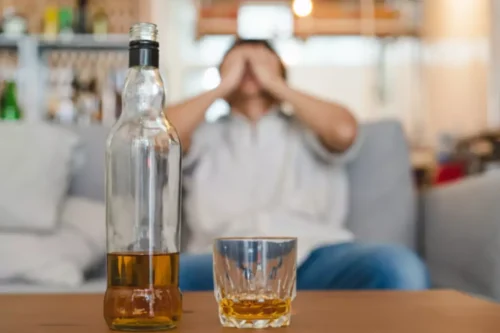The Four Levels of Recovery Residences Sober Living Home I Cambridge Recovery Sober Living I NJ Sober Home
The levels describe the intensiveness of the program and the level of care provided. Level 1 houses provide almost no recovery-orientated structure (other than requiring residents to attend mutual support groups or the like), while Level 4 houses are considered “Therapeutic Communities” and share much in common with residential inpatient treatment. While there are fundamental differences between the levels (discussed below), their basic purpose is all the same – to provide a substance-free environment where people can continue their recovery while relying on support from their peers.
The NARR Standard
We emphasize the importance of family involvement throughout the recovery process, seeing the impact of a caring and supportive environment. At Purple, we provide a range of services and programs designed to restore men through an active recovery lifestyle, leveraging the power of community and personal growth. The heart of all recovery residences is the Social Model, an operational framework that distinguishes these environments from other shared living spaces. This model emphasizes the importance of personal and collective responsibility for the safety and progressive health of oneself and others in the community. Strengths-based lived experience, peer leadership, participative governance, and community-based support networks are the foundational elements for lasting recovery. Level I Type P (Peer-run) are democratically run alcohol and illicit substance-free recovery homes.
Terms of Use
While there is no paid staff at this level of support, there is often an overseeing operator who facilitates admissions and discharges to the home and is available if there are house issues that cannot be resolved internally. There are no in-house services offered at this level, except the benefit of living in a supportive community. The primary mission of MARR is to promote this ethical and sustainable management of high-quality recovery residences throughout the State of Maine. Recovery residences, formerly known as sober living homes, are privately-owned homes or complexes that provide housing for adults with a substance use disorder (SUD) or co-occuring disorder.
How useful is abstinence alone in understanding the effectiveness of SUD treatment?
In contrast to a rating system (e.g. 1-star vs 5-star), the NARR Levels distinguish between types (categories) of recovery residences, which differ in the kind and intensity of services and supports they provide. Individuals need various types and levels of support at different stages of recovery. Matching an individual with the appropriate level of support is both recovery supportive and cost effective. A bit more on services offered by each level can be found on the NARR site, which offers a good summary table. Recovery Residences (RRs) are organized into four categories, or “levels,” by the NARR.
SAMHSA has awarded NARR a 1-year, $150,000 contract to provide SSA’s and emerging NARR affiliates with technical assistance. This scale promotes developing an environment of empathy, empowerment, and inclusivity that is vital for nurturing pathways of sustained recovery. Recovery homes on the registry and those working towards inclusion on the registry can apply for a loan up to $4,000 in order to help with operating costs. Recovery homes working towards inclusion on the registry must do so via accreditation by the Washington Alliance of Quality Recovery Residences. “We will be working closely with Medford officials, our neighbors, and the university community to communicate the project’s progress and details as they are determined,” he wrote.
- The primary criterion for this living environment is a willingness to be abstinent from mood-altering substances.
- While the hall will not host a Tufts Dining facility, its ground floor will host retail shops that the university said may include food services.
- As you consider taking this journey with Purple Treatment Center, know that you are not just joining a program; you are becoming part of a community committed to supporting you every step of the way.
- The NARR Standard provides guidance for certifying effective recovery residences and incorporates the collaborative values of acute care and social models of recovery.
Level 4: Service Provider Recovery Residence
This level is appropriate for the individual who needs a higher degree of structure and support, perhaps coming out of a stabilizing residential treatment center. Filters to the left of the map allow you to search for the type of home you are looking for. Both recovery residences and Oxford Houses are peer-run and peer-operated https://ecosoberhouse.com/ homes. Choosing the right type of Recovery Residence can significantly impact an individual’s recovery journey, offering a foundation for a healthier, substance-free life. These environments go beyond mere accommodation, offering a structured, substance-free lifestyle that fosters long-term sobriety and personal growth.
- They are alcohol and illicit substance-free recovery housing that utilize house rules and peer accountability to maintain safe and healthy living environments.
- In general, rural residences provide higher or more comprehensive levels of support than other options because there are fewer support resources in the surrounding area.
- Recovery homes on the registry and those working towards inclusion on the registry can apply for a loan up to $4,000 in order to help with operating costs.
- Delineating recovery residence levels allows the consumer to identify and match the service need to the appropriate level of the residence.
- Tufts has begun the development process for the largest residence hall in university history, the university announced Thursday evening.
- Individuals participating in community-based Medication-Assisted-Treatment (MAT) are welcomed by RRA members and encouraged by the Recovery Residence Association to utilize our housing directory to find a home that best meets their housing needs.
Together, we harness our collective strengths to build a more inclusive, supportive, and empowering recovery landscape. The residential facility is typically part of the continuum of care for an overseeing rehab institution. All types of residences and occupancy numbers can be found at this level, depending on the program.
For an overview of the program, read the Recovery Residence fact sheet and Recovery Residence FAQ. Email recovery residence the HCA Recovery Residence team for information or questions regarding the loan application process.
- Purple Treatment Center’s men’s recovery programs is more than just a place to live; it’s a vibrant community where men are supported on their journey to overcome substance use disorder.
- Residences that meet and maintain the NARR Standard ensure that this resource continues as a viable asset for the people who need it.
- At Purple, the philosophy is centered around the Active Recovery Lifestyle, which goes beyond the traditional approach to recovery.
- While Level 2 homes don’t have recovery services onsite, there’s usually a strict requirement for maintaining membership in a recovery group or sticking to an aftercare plan with a counselor.
- Their primary purpose is still to provide a substance-free environment for people to live in, but the programs are more structured than Level 2 homes.
- RRA members participate in an 1 announced and 1 unannounced Peer Review and Accountability Team site visit, to ensure their compliance with the RRA Quality Standards and to provide them with coaching and resources to improve their recovery residence.
- A quarter of the houses were affiliated with a treatment program and 69% of the houses were single-gender facilities.
- Recovery residences listed on the registry are verified by the Washington Alliance of Quality Recovery Residences (WAQRR) as following the National Alliance of Recovery Residences (NARR) best practices.
- Other than these and a few other small programs, there has not been a significant increase in dollars allocated to recovery housing, yet.
- Houses serving fewer residents on parole/probation increased the likelihood of drug abstinence and total abstinence.
Alcohol abstinence and employment varied according to the Sober Living Network chapter (i.e., geographic region) that the house belonged to. HUD is a federal agency, which makes various funding streams available to states and individual providers. That being said and when opportunities arise, resident leaders are recruited as a House Manager or other staff members.






Plaats een Reactie
Meepraten?Draag gerust bij!